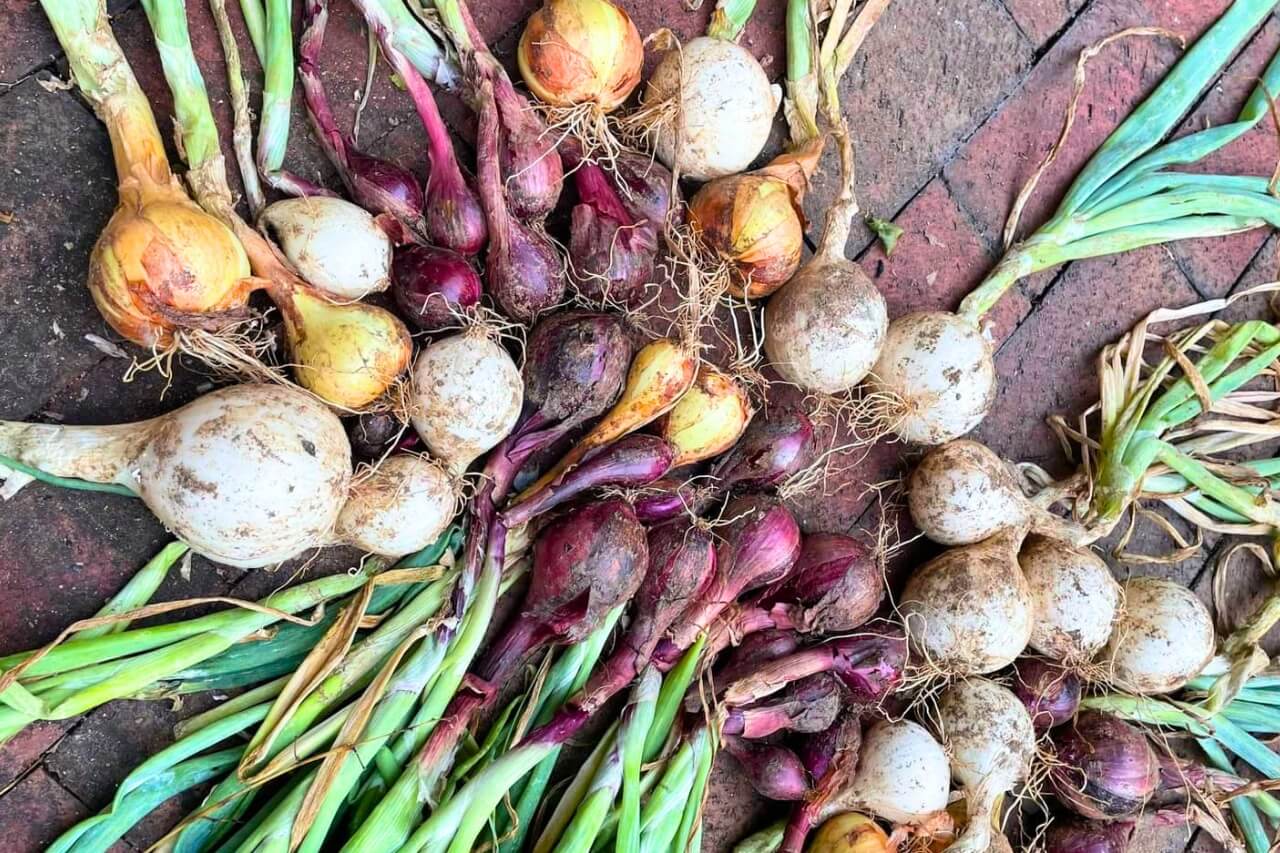Today we are talking about onions. I know, it is not the trendiest plant, actually I always notice a prejudice around it.
It may be because of the smell, but many people snub onions and don’t plant them. This is obviously not the case for me!
In my kitchen onions are the queen, I use them a lot and I like to grow them because my onions are much tastier and sweeter than the ones I find in supermarkets.
So here it is, my go-to tips for growing the perfect onions. I hope you find them helpful!
Preparing the Soil
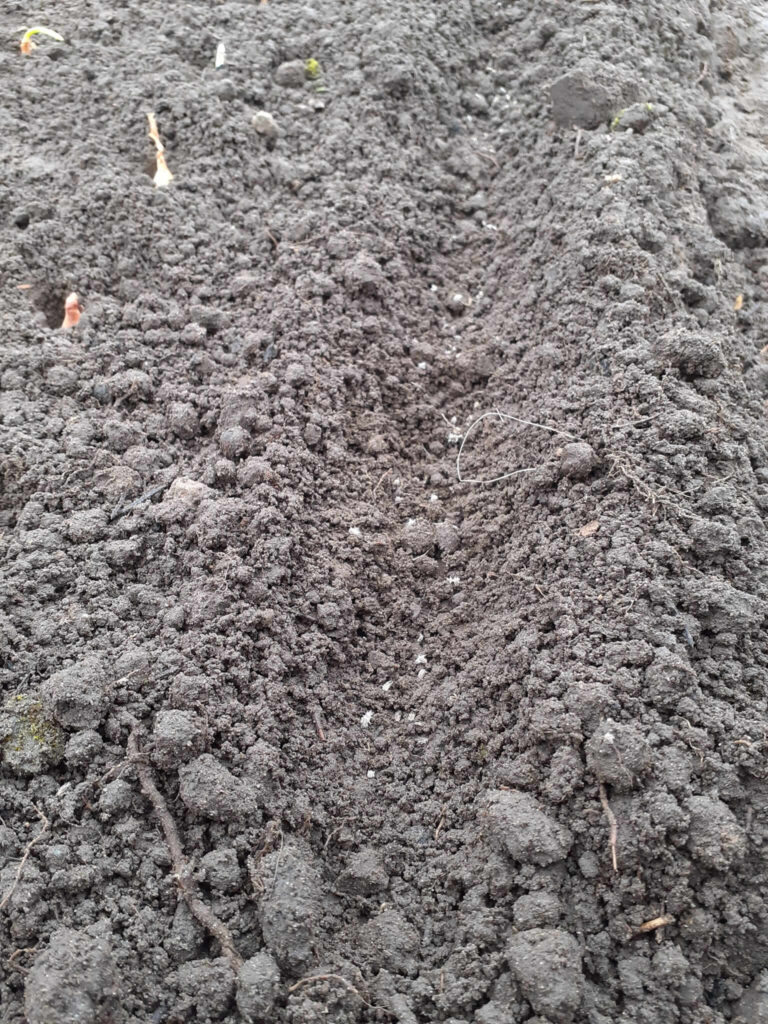
The firtst good news is that Alliums like onions are relatively easy and incredibly rewarding to grow.
Since they’re related to garlic and chives, they have a fairly similar preference for their soil.
These bulb vegetables like any fertile and well-draining soil. Sandy loam, a mixture of clay, silt, and sand, is my favorite because it has an excellent drainage while retaining enough moisture for the plant to survive.
If you plan to cultivate outdoors and not in pots, you can test if your garden soil drains well by digging a one-foot-wide hole (about 12 inches), filling it with water, and observing if the liquid drains in under 15 minutes.
Similarly, if you want to use containers, make sure they have good drainage, and if necessary you can drill more holes to let the water drain away
Seeds or Sets?
To plant seeds or not to plant seeds. That’s one of the most common questions I get about planting onions.
In general onion sets (the partly grown bulbs) are a better choice if this is your first time cultivating onions. They grow faster, and you can transplant them directly to the ground with no fuss.
Seeds, while obviously cheaper, require some gardening experience. It’s a personal choice and it depends on your experience, the time you have and the amount of care you want to give your onions.
You can purchase both at local garden centers, nurseries, or online. Just ensure you pick the right variety based on the uses you want to make of them in the kitchen (I plant both golden and red ones).
The Best Times to Plant Onions
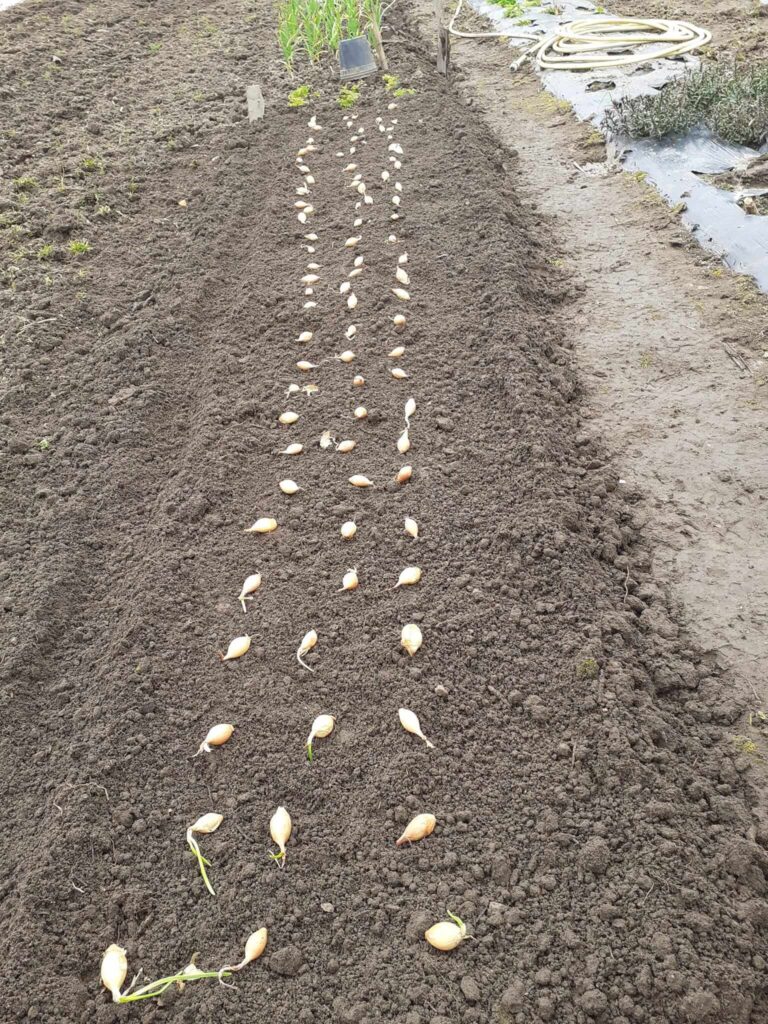
Onions are generally hardy, so plant them as soon as the soil becomes dry enough. Early spring is the perfect time to start sowing if you have long-day onions and want to harvest larger bulbs.
I usually plant them between March and April, however, do remember that onions start bulbing when they receive full sun.
If you wait until late April or May, the onions will have a shorter growth window between planting and bulbing, so you’ll likely end up with smaller bulbs.
PRO GARDENER: Most onion varieties love getting over 10 hours of daylight, so also pick a spot that receives full sun.
In the shady parts of your garden you can plant the vegetables that grow well in the shade.
How to Plant Onion Sets or Seeds
As you probably can expect, onion sets are more convenient to plant. There’s no need to soak and you simply press the sets into the soil, just enough so the tips are visible.
Try to space the sets 4 inches from one another in rows 12 inches apart.
If you’re starting from seeds, sow them indoors about 2 to 3 months before your area’s last expected frost. Keep the seedlings in a sunny spot and water them regularly.
Once the seedlings are a few inches tall, transplant them into the kind of soil we talked about earlier. You should space them the same way as you would with sets.
Onion Watering Needs
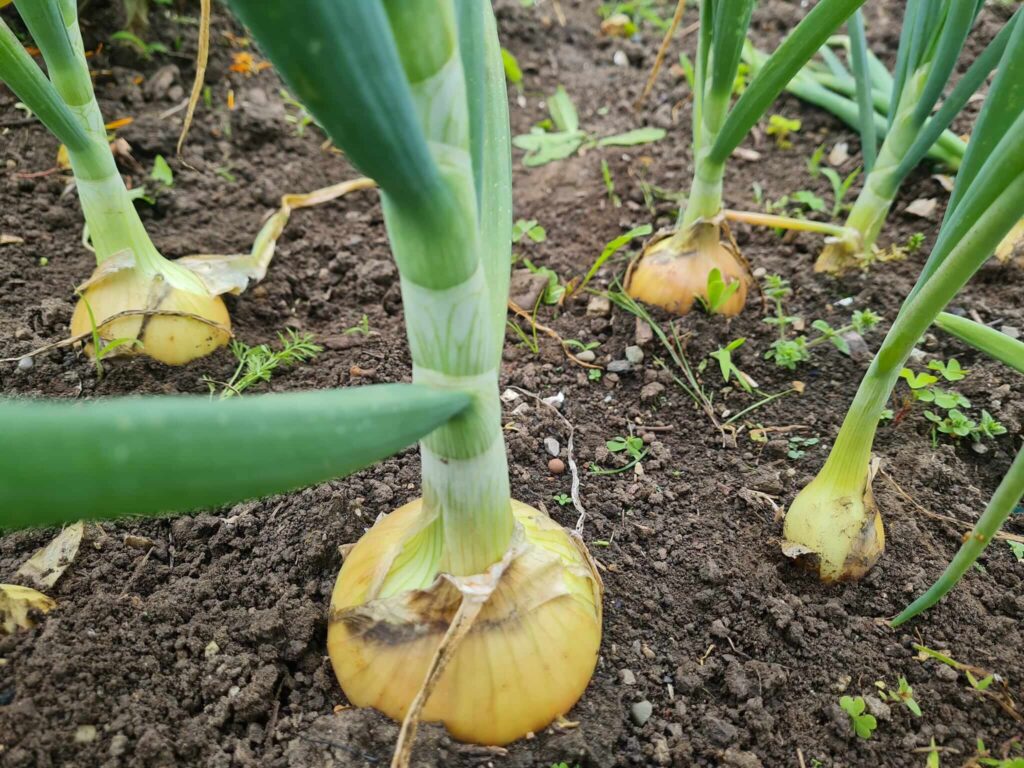
The tricky part about onions is that they need a lot of water but simultaneously hate soggy soil.
Too much water risks your bulbs rotting and contracting infections and too little water will compromise the bulbs’ size and quality.
One piece of advice my grandma gave me that I think is essential is to water only in the morning.
This way, you can water generously, but any excess can dry out more easily. If you water in the afternoon instead, too much moisture might linger overnight, which isn’t ideal.
Drip and furrow irrigation are more suitable watering techniques for alliums, but I understand that these are not common techniques in home gardens. At least be sure to avoid the most common watering mistakes.
Nourishing the Allium
Fortunately, onions aren’t as picky with their fertilizer, though they’re fairly heavy feeders.
The only important thing that I wanna say is that onions love nitrogen, so spray some high-nitrogen formulation into the soil every few weeks to support growth and bulb formation.
Another thing I want to point out is that they’re particularly prone to root maggots and thrips. They can attack both the bulb and foliage.
Companion planting is a tried and tested technique, for example we know that marigolds smell reduces the egg laying of onion maggot fly.
For a more detailed insight into pests have a look at the guide on the most common garden pests (and how to get rid of them).
Other Useful Tips for Perfect Onions
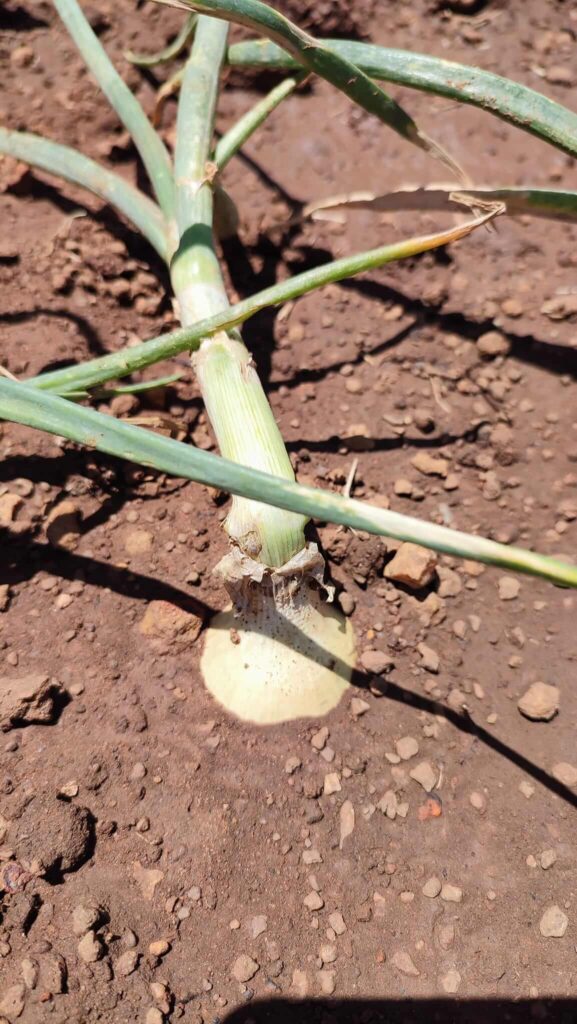
Lastly, some tips for getting beautiful and flavorful onions. I’ve already talked about the soil, the watering, the timing and the sun they need.
What else can I say? Well, try to keep the onion bed as weed-free as possible. Weeds steal nutrients and space, and can reduce the quality of your onions.
PRO TIP: Perfect onions need space. Keep 4–6 inches between each bulb.
You can also use straw or dry grass clippings to retain moisture and keep weeds down.
In addition, another thing not everyone knows is to stop watering when the green tops begin to yellow and flop over. After that, let them finish maturing and drying in the soil for a week before harvesting.
Plus my grandma says never to use freshly harvested onions. After harvesting, let onions cure in a dry, airy place out of direct sun for 2–3 weeks. This should enanche their sweetness and helps them store longer.

